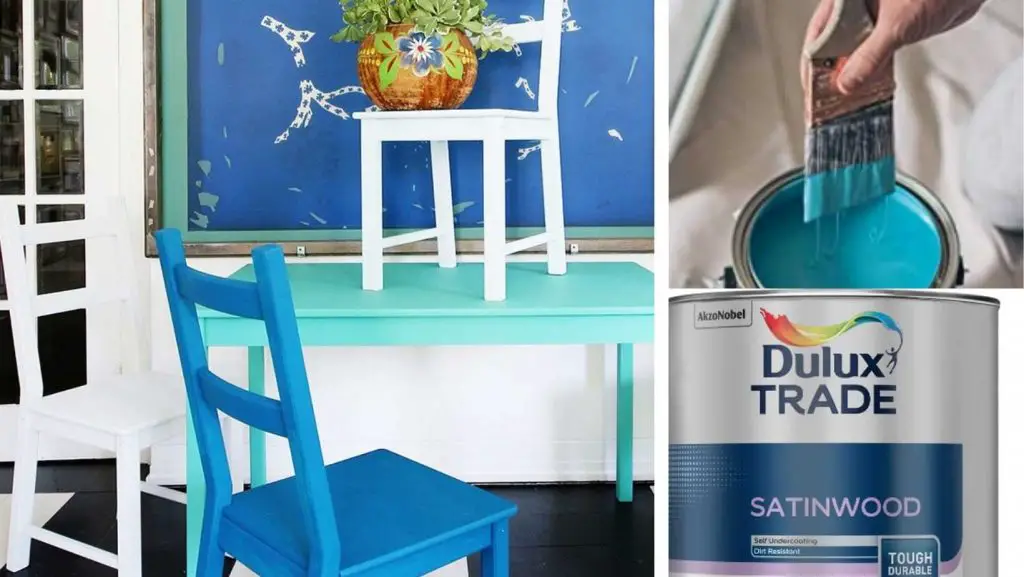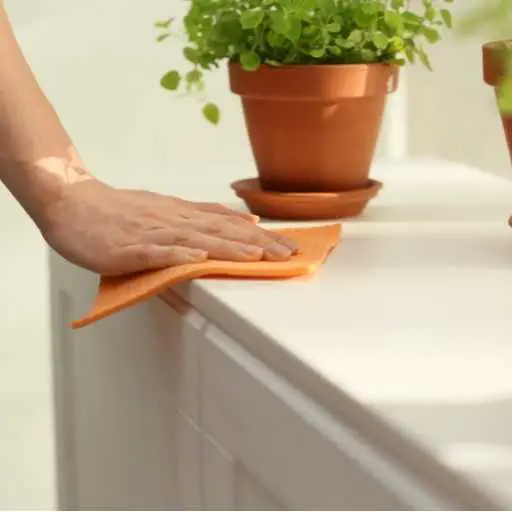Emulsion paint can be a good choice for your interior projects. If you’re like me, then you love painting your wood projects with Emulsion paint. However, suppose you are thinking of using your leftover Emulsion paint from home decorating projects on your wooden furniture, such as a cabinet or table. In that case, you must learn how to protect your Emulsion paint on wood.
Emulsion paint provides a nice, smooth finish that can make your project stand out. However, this beautiful finish can be easily damaged if you’re not careful. Using Emulsion on wood is not something that the experts usually recommend. However, if you want to make the best use of your leftover paint, keep reading the blog post to know your precautions to protect the paint from being damaged.

What is Emulsion paint, and why is it vulnerable to damage On wood?
Emulsion paint is a water-based paint, a popular choice for interior walls and ceilings that comes with vinyl or acrylic added to them. Vinyl or acrylic is added to them to provide added durability. There are several finishes in Emulsion, while the most popular are Matt, Satin, Eggshell, and glossy. People, in general, use specific types of paint on wood such as satinwood paint because it has durability and satinwood is also washable on wood.
Emulsion paints are mainly appropriate choice for interior walls and ceilings. However, there are Emulsion paints that you can use for both interior walls and wooden surfaces. Although making paints for walls and ceilings, which are different surfaces from wooden ones, demands different mechanisms and ingredients from the dedicated wood paint, some emulsion paints don’t usually stick to the wood. And it is also easy for them to chip and flake.
How to paint wood with Emulsion to protect it for a long time?
The first step to protect Emulsion on wood essentially begins before you paint the wooden surface. After that, you must follow techniques when painting wood with Emulsion to stop the paint from wearing off on wood.
Clean the surface and make sure the wooden surface is free from dirt, dust, and grime. Could you give it a quick wipe with warm water? If possible, give a good scrub with a spray of washing-up light liquid. Then, use a soft clean cloth to get in all the nooks and crannies.
To make the paint stick better:
Use sandpaper or wire wool to rubbing-down the surface. Remember that you aim to get a better finish and a longer-lasting painting job on your wood. So don’t be meager while preparing the surface; give it as much freshness as possible.
Start using a primer to give the paint a better way to adhere to the surface. You can also expect a better finish if you add a primer to the surface.
After applying the primer, make sure to use two or three coats of paint. Let the paint dry thoroughly (allowing the paint to dry for a couple of days). Drying the paint is essential for maximum adhesion.
To protect the paint from being worn off easily, apply a clear coat of polyurethane over the top of the paint. This will help to seal the paint and prevent damage. Another way to protect the paint is to use a sealer before painting.
This will create a barrier between the paint and the wood, which will help to prevent the paint from soaking into the wood and causing damage.
To protect the paint for years to come, use a coat of liquid wax or a mix of natural beeswax, turpentine, and linseed.
How can you protect Emulsion paint on wood from fading over time?
Interior Emulsion paint on wood can fade over the years. There are various whys and wherefores behind this.
Temperatures and light fluctuations in your room are the main reason for breaking the chemical bond of the paint’s pigment. Generally, all paints go off after a certain period, but heat and light (both natural and artificial) can hasten the process.
To stop the paint fading process, you can choose a light color that reflects the light instead of absorbing it. Moreover, choosing the right paint is the possible solution to this problem, as nobody can stop aging.
What are the precautions to take to protect Emulsion on wood once painted?
Once you paint your furniture or cabinet with Emulsion, there are some aspects that you should handle to protect your paint from chipping or peeling and last longer.
If you use washable paint on your wooden surface, make sure to wash it when necessary. However, please don’t make the mistake of washing it too often because overwash may wear off the paint.

Varnishing the furniture can be helpful as varnishing prevents any scratch and nick first before it gets into the paint. It also protects the paint from dust and yellowing. Varnishing will make your paint look more glowing. Let the paint dry fast before you furnish the furniture.
Make sure to control your room’s humidity, heat, and temperature so that paint doesn’t chip or flake.
The Bottom Line
Whichever method you choose, make sure to follow the instructions carefully. Protecting your Emulsion paint is not a hard job. What you need most is a little awareness and dealing with the furniture delicately, which is true for not only Emulsion but also other paints.
It’s a thorough process of protecting the Emulsion paint on the wood. To sustain your paint for a long time, you must prepare before you start painting the surface. Always make sure to apply primer, sealant, and primer to make the paint durable and longer lasting on wood.

S. Pushon is a paint expert, self-taught artist, and currently working as an adviser in the paint industry as a Quality Improvement and Development Assistant.
An artist by heart, he draws remarkable art pieces and as a professional paint industry individual, he seeks the insight and shares with enthusiasts. Read more…

